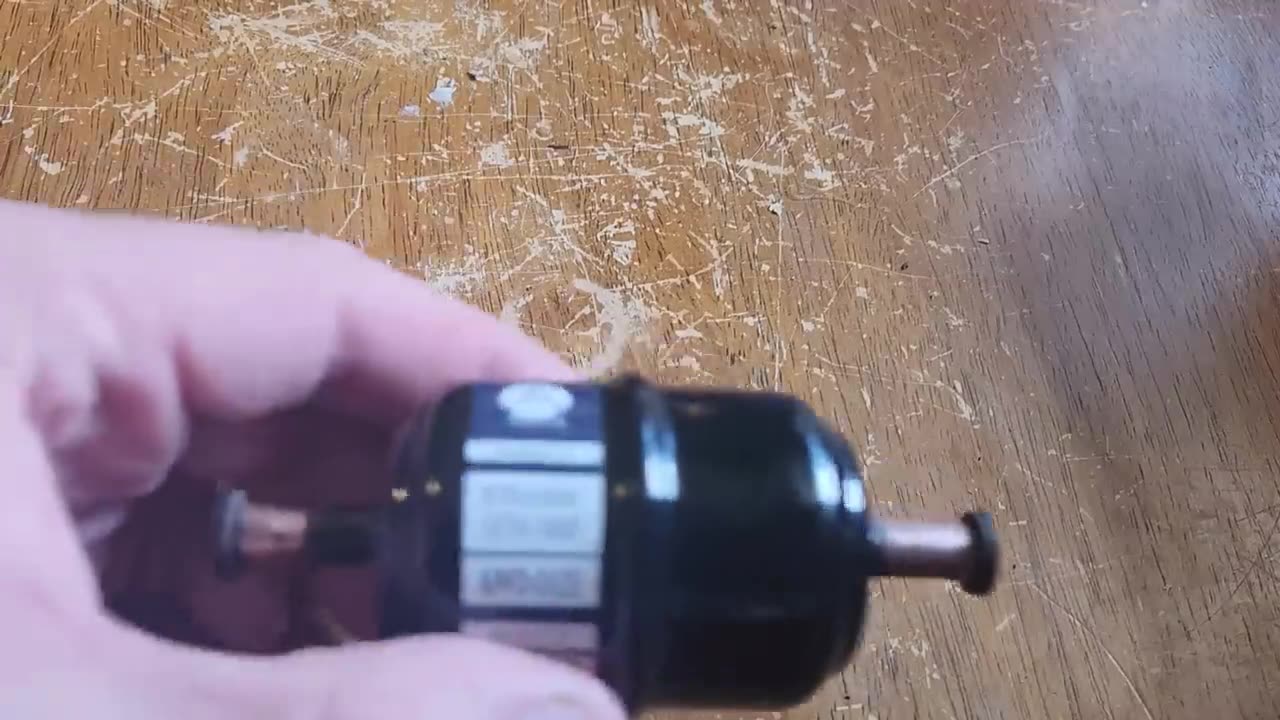Premium Only Content

DIY Vapor Compression Refrigeration System
DIY Vapor Compression Refrigeration System
In this video i'll show how to put together a single-stage vapor compression refrigeration system and explain the theory behind it. This machine uses propane (R290) as a refrigerant, because it has properties very similar to standard Hydrofluorocarbon (HFC) refrigerants, but is extremely cheap and readily available, and has almost no negative environmental effects. The obvious disadvantage is its flammability. If you're careful, though, propane or butane are perfect substances for a DIY vapor compression system.
This is still part of my long term project to build a DIY cryocooler to make my own liquid nitrogen, but I've pivoted away from gas-phase systems like stirling/GM and decided to focus more on phase change systems due to the greater availability and low cost of parts. In upcoming videos, i'll be staging multiple vapor compression loops together to get temperatures below -100C. After that, i'll use a joule-thompson cycle to make the final push down to liquid nitrogen temperatures, but will do so with a mixture of hydrocarbons rather than nitrogen.
Here's some performance specs of the device in this video:
Condenser Pressure: 10-15 bar
Condenser Temperature: 27-44 C
Evaporator Pressure: 1.2 bar
Evaporator Temperature: -37 C
Capillary tube ID: 1mm
Capillary tube length: 2m
Compressor nominal rating: 5,000 BTU
Compressor locked rotor amps: 27A
Compressor operating limit (estimated): 5.4A
Input power: 667W (529W from compressor, 138W from fans)
Refrigerant charge: ~50 grams of propane
Maximum recorded cooling power: 116W (COP 0.173)
*Note that this power was recorded by testing the temperature drop of water reservoir at room temperature with lots of heat leaks, which was a far from optimal condition.
Also, recording cooling power by multiplying the water flowrate of 13.5 grams/sec by water's heat capacity times the temperature differential across the coil of 3.3C yielded a higher cooling power of 186W.
In upcoming videos, this system will be used to cool the condensor of a second refrigeration circuit, which will then evaporate to a far colder temperature close to -100C. This requires ethylene as a refrigerant (R1150). It's pretty hard to find and expensive to buy commercially, so in the next video, i'll be showing how to make it.
Other useful tidbits:
Propane bottle NPT thread adapter:
https://www.amazon.com/Hooshing-Propa...
Condenser fan:
https://www.amazon.com/BLACKHORSE-RAC...
-Window AC unit that was stripped for condenser coil was rated at 5,000 BTU. The manufacturer/model number you use is not important as long as its sized right.
Music Used:
Kevin MacLeod - Lobby Time
-
 2:25
2:25
joegecko's Documentary Channel
14 hours agoIsrael created hamas
232 -
 2:37:49
2:37:49
The Connect: With Johnny Mitchell
1 day ago $8.91 earnedBlackwater Mercenary EXPOSES Private Military War Secrets From The Middle East, Fueling Terrorism
42.7K42 -
 LIVE
LIVE
EXPBLESS
1 hour agoA Rare Sunday Morning Stream (Avowed LIVE Gameplay)
412 watching -
 2:54:21
2:54:21
Total Horse Channel
2 days ago2025 Scottsdale Arabian Horse Show | Saturday Evening Session
87.3K6 -
 LIVE
LIVE
BigDaddySlick78's Live Gaming Channel
3 hours ago🔴 Call Of Duty Warzone Rebirth Island & Area 99 Live w/ Subs #callofduty #warzone #bo6 #cod
93 watching -
 22:39
22:39
The Mel K Show
11 hours agoMel K & Representative Brandon Gill | Our Constitutional Republic is Being Restored | 4-26-25
63.4K51 -
 4:17:17
4:17:17
VapinGamers
11 hours ago $6.28 earned📣 Fortnite Family Night! - Games and Dubs with BrianZGame - !rumbot
54.6K4 -
 4:27:48
4:27:48
ThePope_Live
10 hours agoLIVE - First time playing The Finals in over a YEAR! Still good? with @Arrowthorn
41.5K1 -
 3:06:26
3:06:26
TruthStream with Joe and Scott
15 hours agoRoundtable with Patriot Underground and News Treason Live 4/26 5pm pacific 8pm Eastern
67.7K41 -
 8:52
8:52
Tundra Tactical
13 hours ago $10.62 earnedSCOTUS Denies Appeal, Minnesota Courts Deal 2a Win!
63.5K13